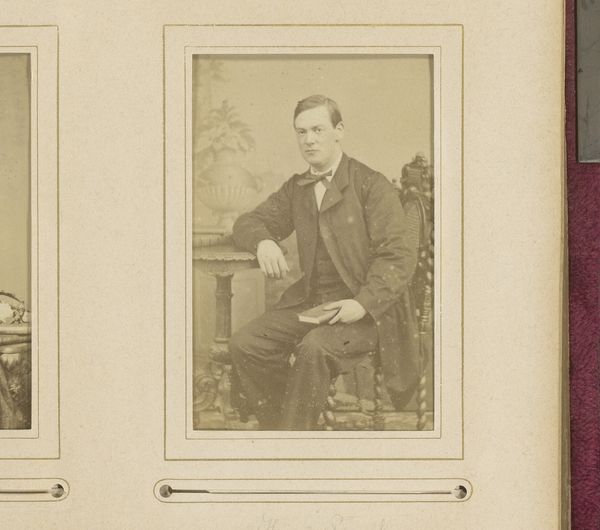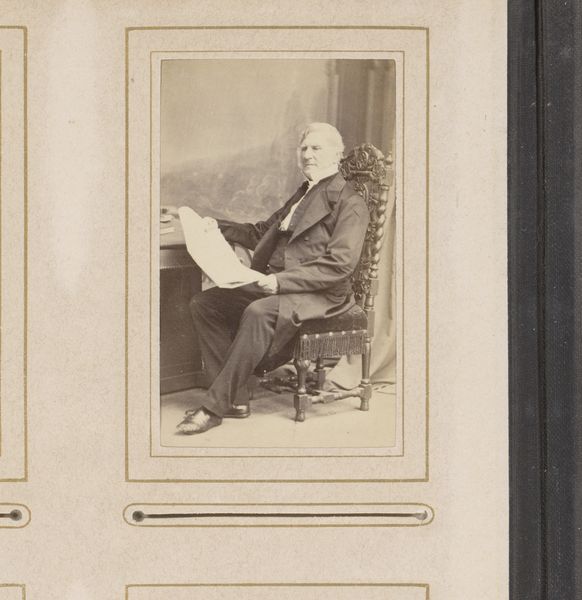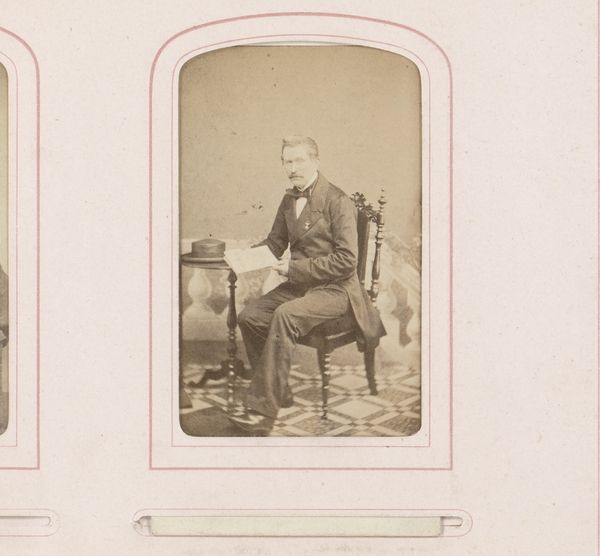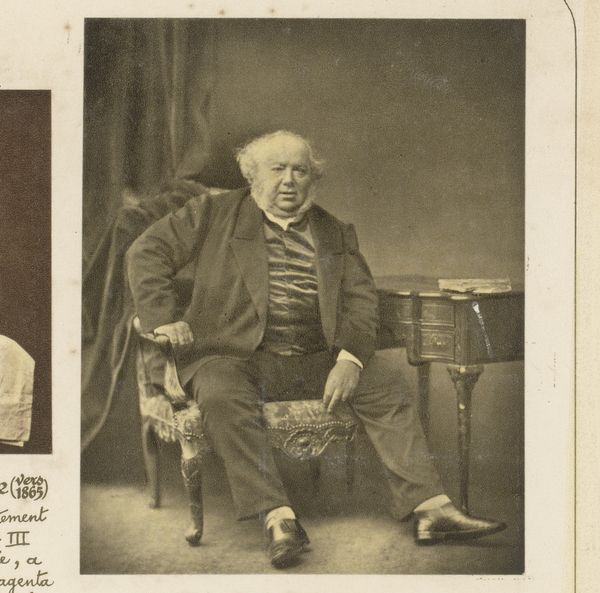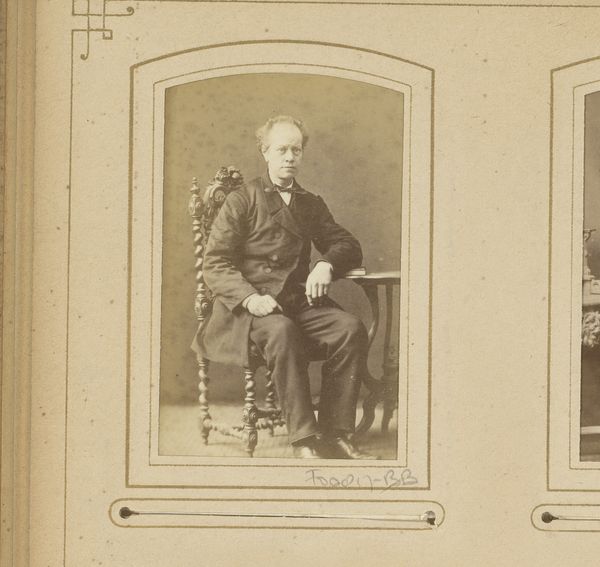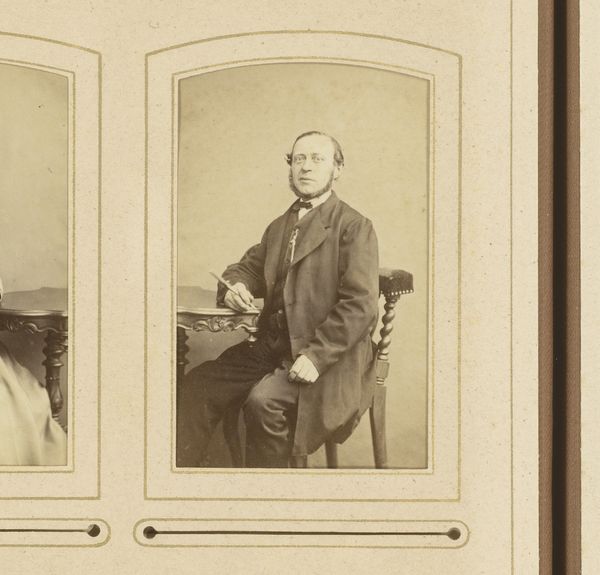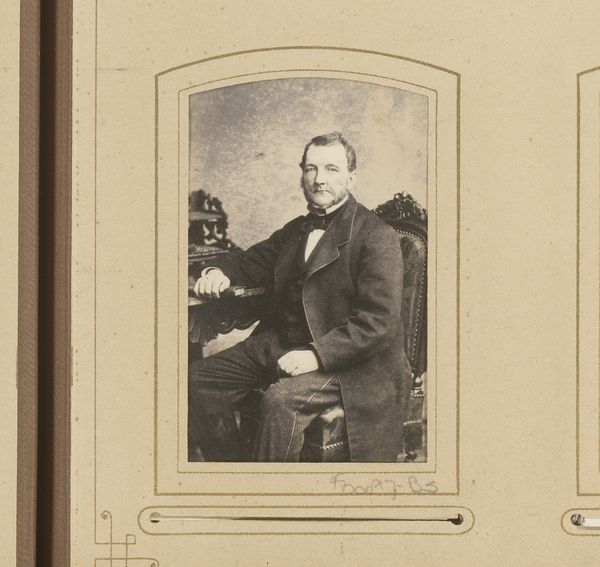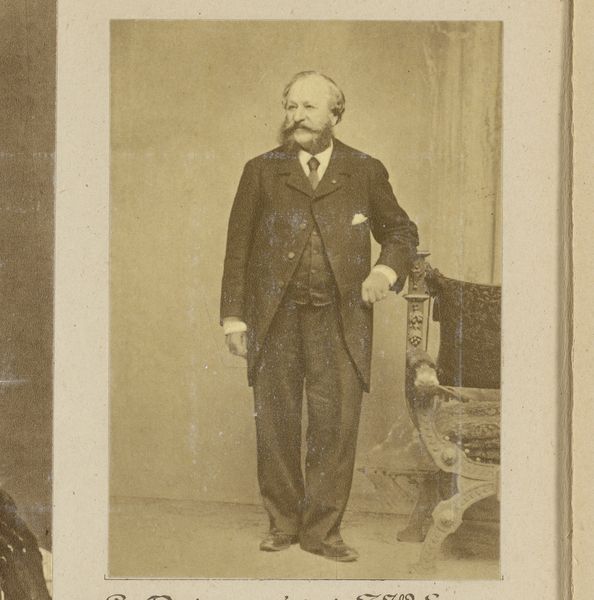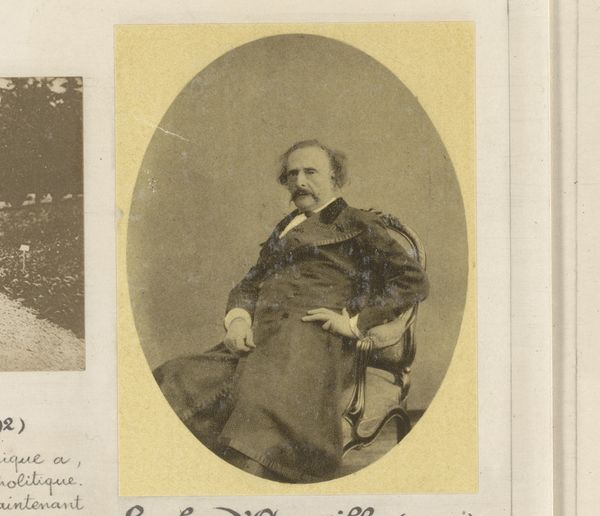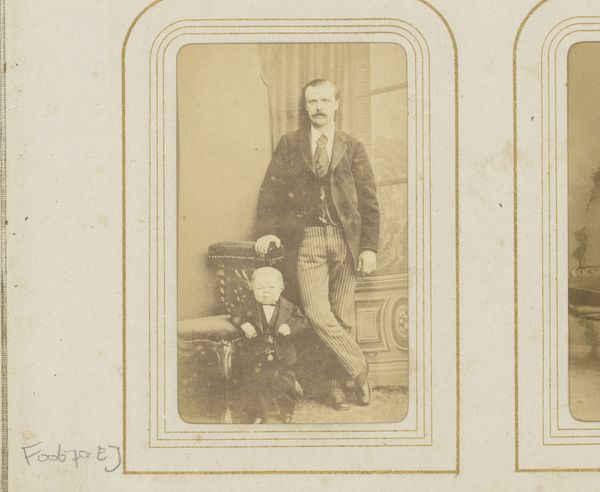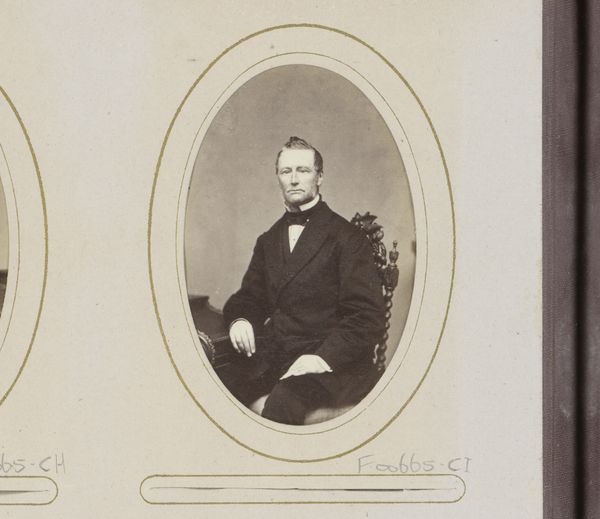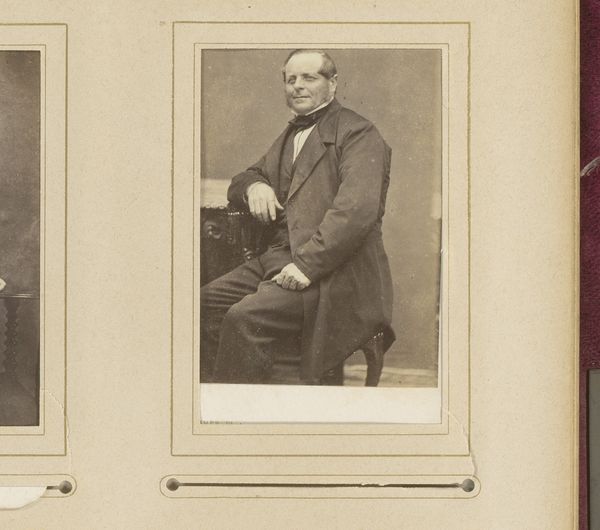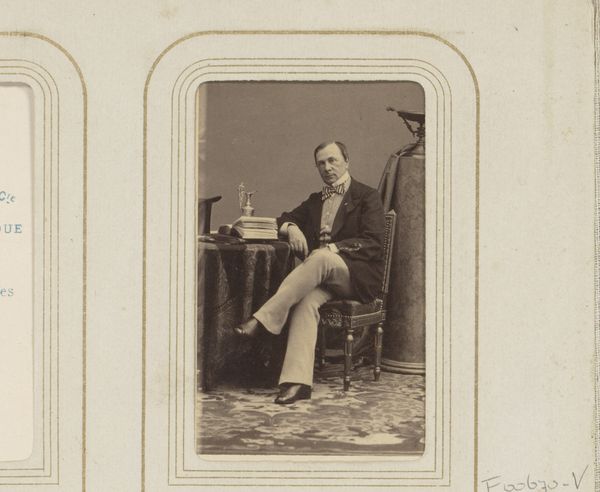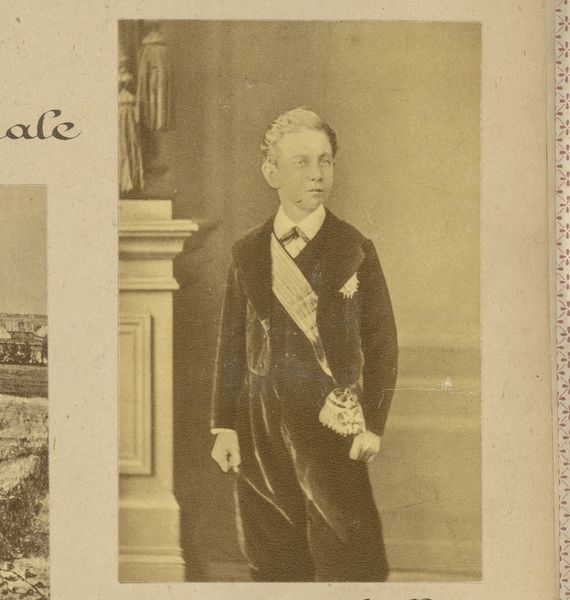
photography
#
portrait
#
photography
#
19th century
#
realism
Dimensions: height 94 mm, width 80 mm
Copyright: Rijks Museum: Open Domain
Curator: Looking at this image, I’m immediately struck by its contemplative stillness, its palpable air of reserved dignity. Editor: Well, you're observing “Portret van Charles Paul de Kock,” a photographic portrait dating back to 1870. I'm drawn to the material reality of early photography here. Curator: Right, I mean the physical process. The very act of sitting still long enough for the exposure itself makes him a performer, not just an upper-class man being portrayed. And look at the chair he's in, likely from the studio. The stick also adds to the theater of the scene, it might be only a prop. Editor: Indeed, considering the early history of photographic studios is crucial, isn’t it? To have one's portrait taken was a deliberate choice, and signified status. Studios acted as social levelers and provided new kinds of records. I mean, think about how many photographic portraits were made versus painted portraits and what this reveals about cultural and economic shifts. Curator: It is not accidental, indeed! This changes who gets seen and how, no longer restricted to only royal houses. We should question what such institutions were, what social functions they held. Editor: Exactly! Moreover, such public images shaped understandings of individual identity. Consider the social context, this coincided with the rise of the bourgeoisie. Photographic studios weren’t merely spaces; they were facilitators of bourgeois identity, playing a part in manufacturing societal narratives of what being upper-middle class looked like in the latter 19th century. Curator: And that's such a clever connection to De Kock's novels. How his work both fueled and reflected that rise in society's middle class. Editor: It’s fascinating to reflect on how photography, at this relatively early stage, both captured and shaped its world. A moment arrested, a cultural tide reflected in sepia tones. Curator: Absolutely, and it reminds us that every image is constructed, influenced by its means of production and broader forces, rather than just reality transparently shown. Editor: A very material world, framed and consumed.
Comments
No comments
Be the first to comment and join the conversation on the ultimate creative platform.
